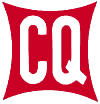The new generation of Software Defined Radios (SDR) has the ability to cover wide frequency ranges and record all of the activity within that range. This digital data can be spooled to disk for storage and transport. Other software allows the user to go back and “tune” through the recording by frequency and time. It is just like listening to a replay of the contest as it happened over the air!
The CQ WW Contest Committee has used SDR recordings in the past to assist with the log checking. It is incredibly valuable for us to be able to go back and listen “live” to what happened at the time and frequency shown in the logs.
Lead by Steve Bolia, N8BJQ, the committee made a much greater effort to collect and use SDR data for checking the 2012 contests. SDR recordings of the complete SSB and CW contests for 2012 were made at 9 sites in Europe, North America, and Oceania. The following stations volunteered their SDR setups to make recordings:
- ES5PC
- OH6LI and OH6BG
- HA1AG with HG6N guys
- S50XX and S52X
- WZ7I
- N4ZR
- N6TV
- KH6LC
- ZL2HAM
Having so many locations provided very good coverage of all of the contest bands and most of the world. There are a few gaps which we are looking to fill in for the 2013 contest season.
Before the contest SKYPE messenger was used by the recording stations to work out the technical details of collecting the data using CW Skimmer software (for CW), a QS1R receiver, and OL5Q’s CWSL software. This required lots of tweaking of settings, some software changes, and test recordings, but all was finalized the week before the contest. All of the SDR clocks were synced to a time standard.
During the contest each site collected approximately 1.3TB of data on USB portable hard drives. The US stations and ZL2HAM mailed their drives to N8BJQ who copied the data and returned the drives for use in the next contest. Each drive took about 17 – 18 hours to copy! All drives made the two-way trip with no problems. The European SDR sites transferred data using FTP to one or two sites. That took a couple of days for each contest.
Once the recording data was on hand, S50XX, CT1BOH and N8BJQ supported the log checking team by providing recordings of log segments or QSOs as requested. The recordings were used to help check for things such as band change violations for Multi-Op stations, not In log checks, single op stations using more than one operator, stations having two signals on the air at the same time, stations working outside of their band, and some signal strength comparisons.
Two examples will illustrate how valuable the SDR data can be. The multi-single and multi-two categories have very specific rules about how many transmitted signals can be used and when band changes may occur. The SDR gives the committee the ability to know exactly what time a QSO was made and on what band. We are also able to listen to multiple frequencies at the same time. This lets us check if a station is transmitting more than one signal on a band. We were very impressed at how well some of the top multi-op teams stay within the rules!
Thanks to N8BJQ, S50XX, CT1BOH, and the SDR team for their help to make the CQ WW DX Contest results as accurate as possible. If you would like to join the recording team, please contact Steve, N8BJQ at n8bjq@cqww.com for more information.
